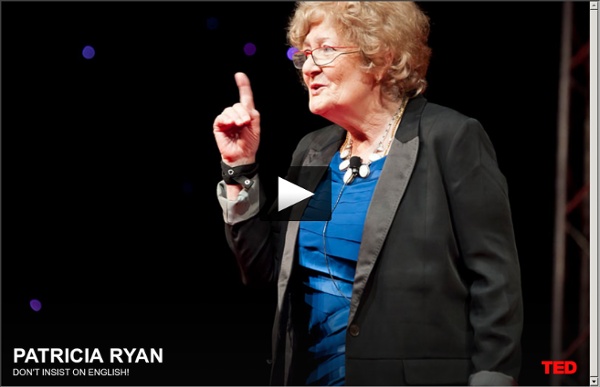



What I Learned from My TED Talk - Nilofer Merchant by Nilofer Merchant | 10:01 AM October 22, 2012 This spring, I got invited to do a talk at a prestigious event — TEDGlobal. And so, I wrote the idea, created a script, polished flow, created slides with a designer, and then worked on the cadence by rehearsing and rehearsing, right up until that final moment of delivery. And I walked out on that stage. Getting better at something is thought to be about learning. But many things are not linear and neat. Which is why one “rule” of my recent book on the Social Era is: “Learn. So how does one unlearn? The first step is to admit something is wrong. The second step is to ask what specifically went wrong — and get help if you need it. To figure out what went wrong, we often need an outside perspective. Then, listen. Begin the process of undoing. In trying to deliver the perfect line and perfect idea, I was buying into a mythology of perfection. It is actually easy to learn about doing. We have to be willing to reinvent.
Top 10 Brain Myths" At one time in history, decapitation was one of the preferred methods of execution, in part thanks to the guillotine. Although many countries that execute criminals have dispatched with the method, it's still performed by certain governments, terrorists and others. There's nothing more final than the severing of one's head. The guillotine came about because of the desire for a quick, relatively humane death. But how quick is it? If your head were cut off, would you still be able to see or otherwise move it, even for just a few seconds? This concept perhaps first appeared during the French Revolution, the very time period in which the guillotine was created. Another often-told tale of demonstrated consciousness following beheading dates to 1905. These stories seem to give credence to the idea that it's possible for someone to remain conscious, even for just a few seconds, after being beheaded. If your head stays on your shoulders, though, it can still be damaged beyond repair.
Agile Blog | News about 1Password and Knox Zazen Instructions | Zen Mountain Monastery To receive beginning instruction in zazen at the Monastery, come to the Sunday Morning Program or Wednesday Evening Zazen. All of our weekend retreats, including the Introduction to Zen Training Weekend, also include beginning instruction for newcomers. Zazen is the form of meditation at the very heart of Zen practice. In fact, Zen is known as the “meditation school” of Buddhism. Basically, zazen is the study of the self. We tend to see body, breath, and mind separately, but in zazen they come together as one reality. Burmese Position There are several different leg positions that are possible while seated cross-legged. Half Lotus Position Another position is the half lotus, where the left foot is placed up onto the right thigh and the right leg is tucked under. Full Lotus Position By far the most stable of all the positions is the full lotus, where each foot is placed up on the opposite thigh. Seiza Position There is also the seiza position. Chair Position In zazen, we focus on the breath.
Stand on Mars Next to the Curiosity Rover With This Incredible Panorama | Wired Science Over the weekend, NASA’s Curiosity rover successfully drilled into the surface of Mars and collected its first sample from the interior of a rock. With this incredible interactive panorama, you can stand right beside the rover and see both its amazing environment and the fruits of its labor (go into full screen for best results). Late on Feb. 8, Curiosity drilled a 6.4-cm-deep hole into a rock nicknamed John Klein on the surface of Mars. The interactive panorama above comes from photographer Andrew Bodrov of Estonia, whose previous Curiosity panorama showed the rover just after it landed in August. Credit: NASA/JPL-Caltech/MSSS/Andrew Bodrov